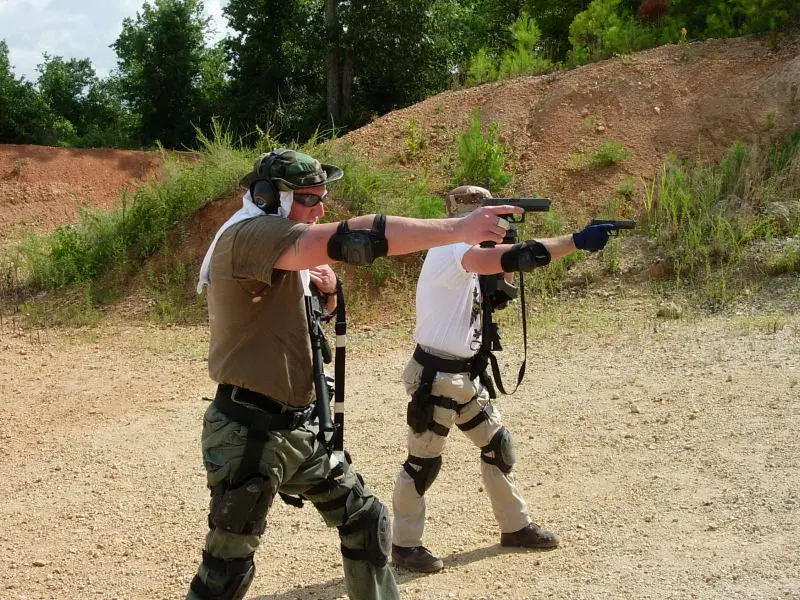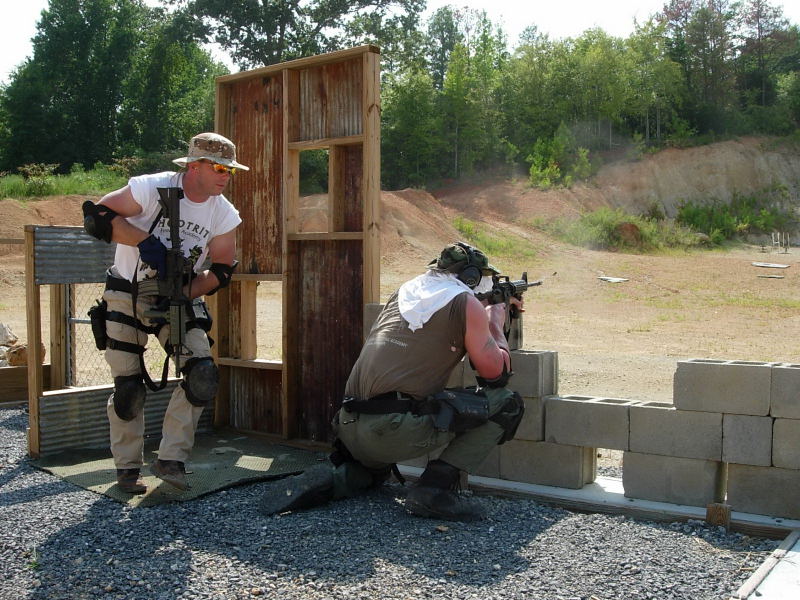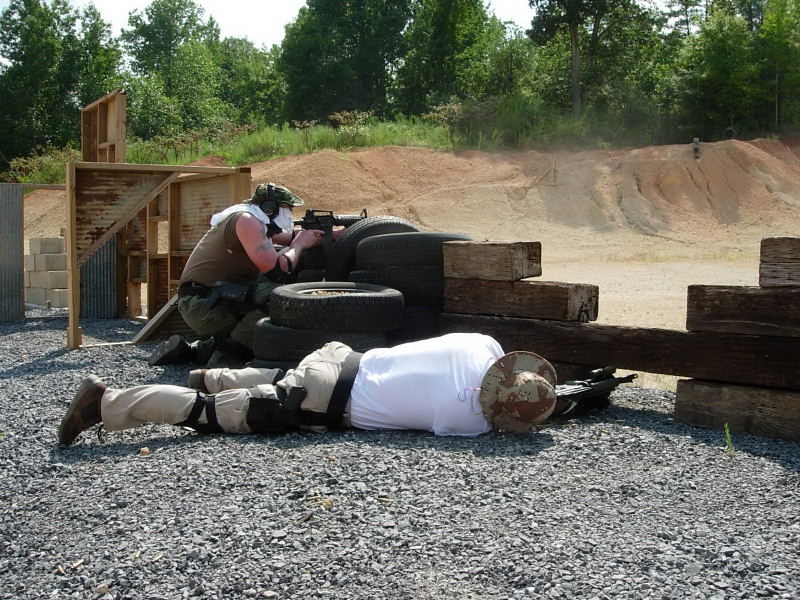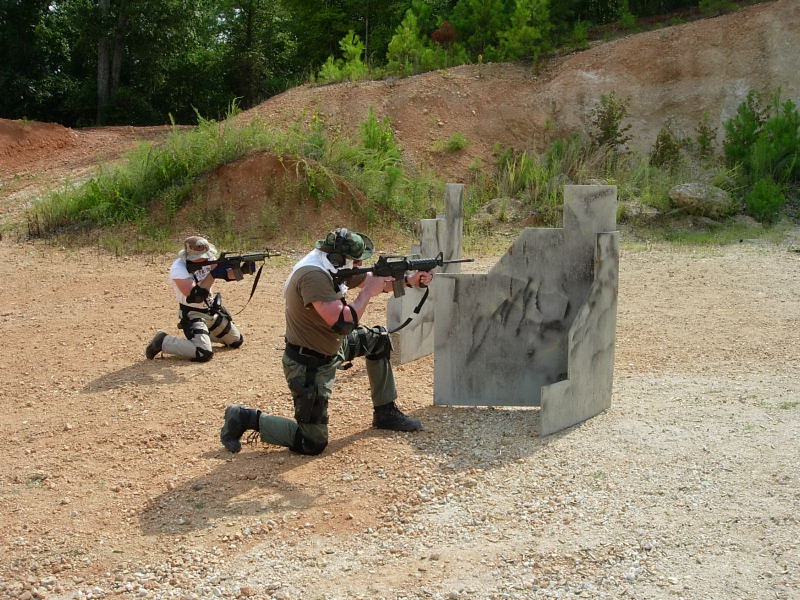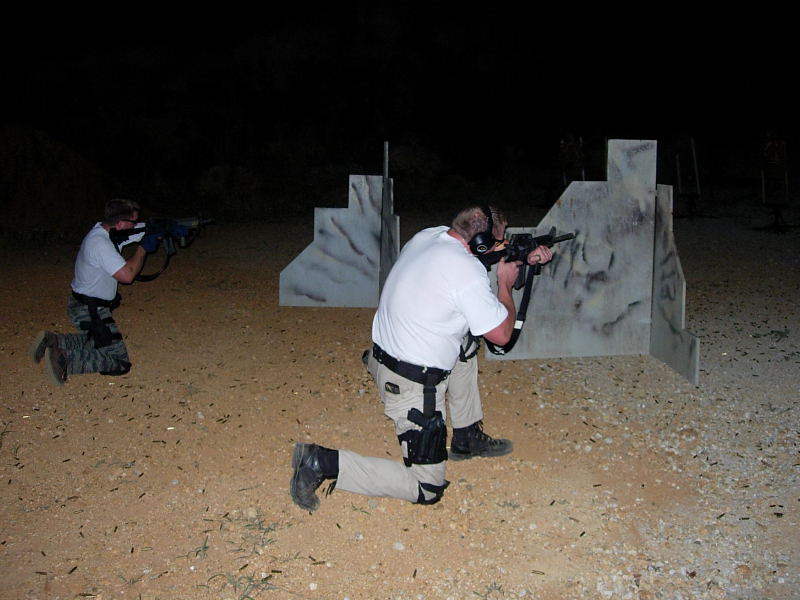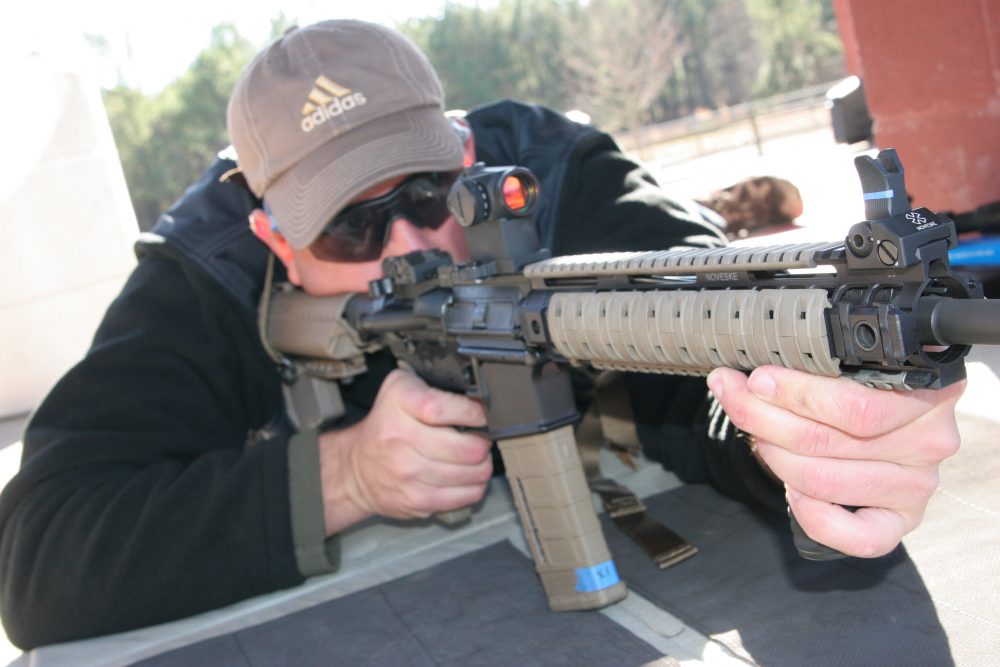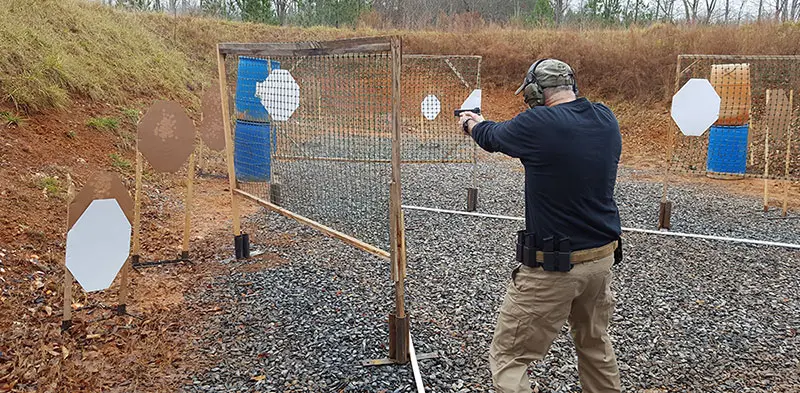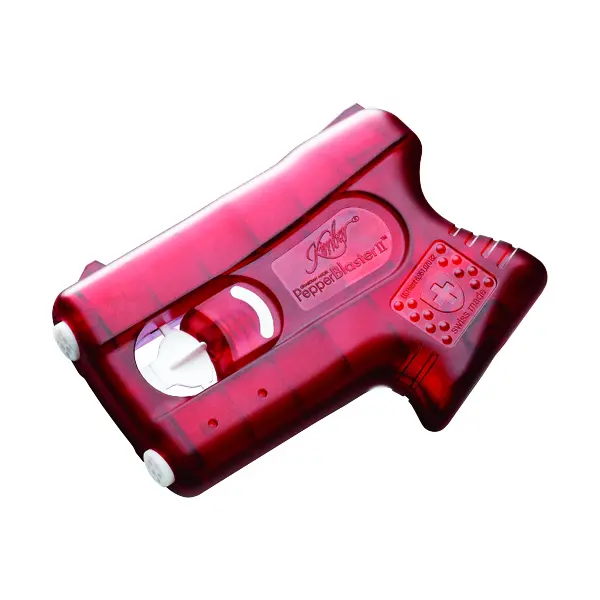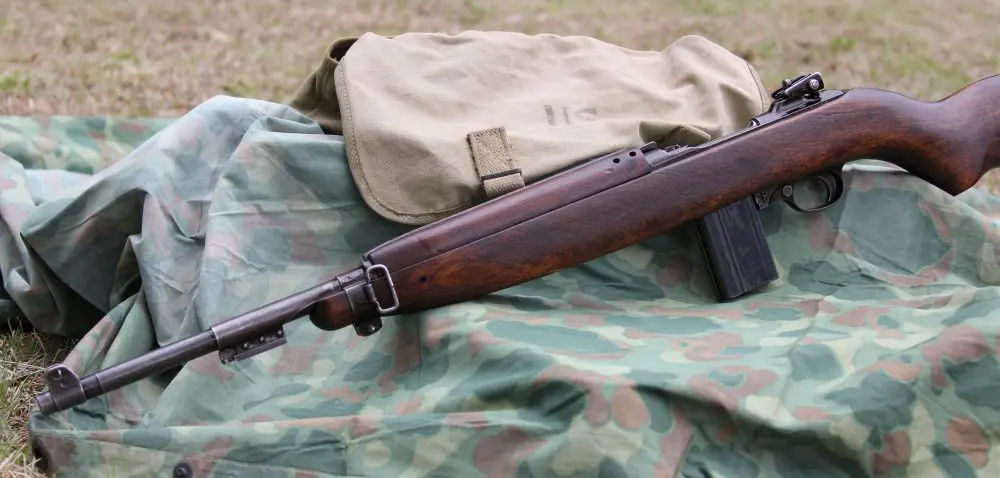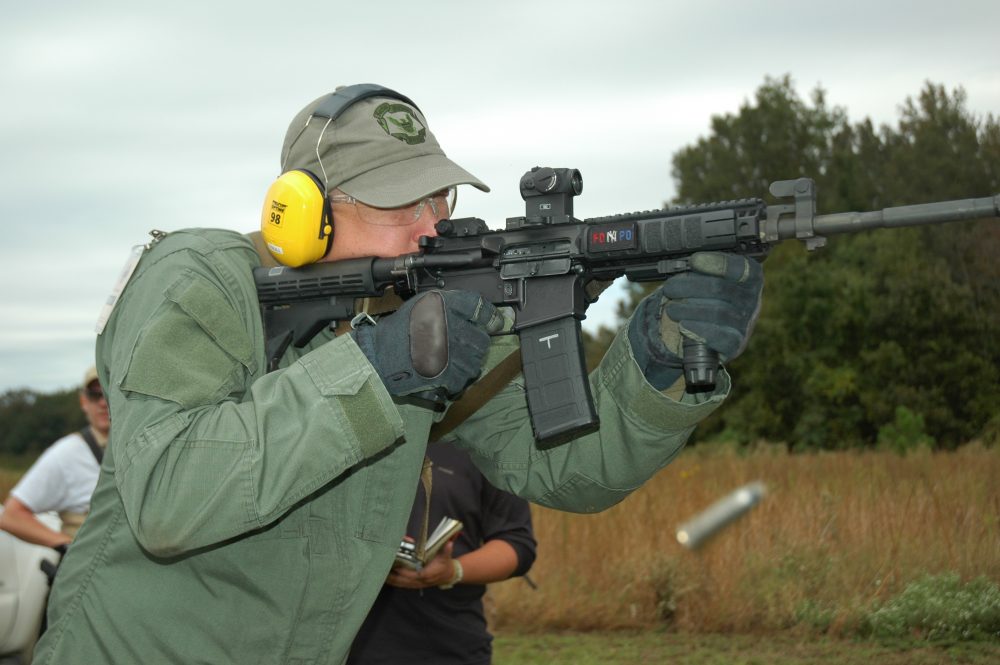Tiger gives patient, sound advice with no ego attached.
August in Alabama is the time for sitting in the shade sipping lemonade and trying to stay cool. For fellow officer John Bryant and me, it’s time to head to Shootrite Firearms Academy for a private tutorial pistol/carbine course with Tiger McKee.
I met Tiger about three years ago when I took a private pistol course with him. I learned and achieved more in that training session than I had with any other shooting course in my 15-year law enforcement career. Tiger is a gifted instructor with a keen eye for spotting and correcting shooting problems. Since then I have taken several other courses at Shootrite with the pistol and carbine.
Tiger’s credentials speak for themselves. He instructs for Rifles Only in Texas and for Thunder Ranch, which means he impressed Clint Smith, no small feat, I’m sure. His book, The Book Of Two Guns, is in my opinion the best of its kind that I’ve read on the operation of the pistol and carbine. Several officers I know, myself included, have taken multiple classes with Tiger and in many cases put out money from our own pocket. When cops do this, it’s a testament in itself—as a group we don’t impress easily. Prior to this course, I talked to Tiger and told him we wanted to train with both pistol and carbine. He suggested a customized course: a handgun/carbine combative including some two-man team tactics, a low-light session and a lot of work on transitions from rifle to pistol. This is exactly what we were looking for. The ability to tailor-fit classes to meet your specific needs is a big advantage of private instruction with Shootrite.
Transitions become second nature during three-day class.
Table of Contents
Day One: The Art of Repetition
We arrive at Shootrite’s new home, located in the Lake Guntersville area, and begin the day in the new classroom completing a few forms and reviewing the range safety rules. Tiger is a stickler for safety and runs an extremely safe facility. I have never felt unsafe or observed any violations during his classes. By 0900 hours we are on the range and the temperature is already approaching 90 degrees. We begin by warming up with marksmanship drills using our pistols. Tiger reminds us early “to load when you can, not when you have to.” We keep our weapons running by performing tactical reloads while covering each other. We quickly review malfunction drills and then shift into combative firing responses, engaging the body, head and pelvic area of our targets.
Next we sling up our rifles and run through the same routine. We first check our zero at 50 yards and then move back to the 100 to ensure our iron sights are “on.” As soon as we’re tuned up, Tiger begins discussing the theory behind integrating the pistol and rifle into one package. A big factor is time, a precious commodity during a fight. When your primary weapon, the rifle, runs empty or malfunctions, there probably won’t be time to reload or clear it. The quickest solution is to transition to the pistol. To reinforce the need to transition from the rifle to the pistol immediately—instead of trying to reload or clear a malfunction—we run a series of drills that record the time required to perform certain actions. We start with the pistols. With sights on target and fingers on the trigger, we record pure reaction time. Next come shots from the ready position, then type one malfunctions, and finally drawing from the holster. We repeat the same drills with the carbine. Finally we time transitions from carbine to pistol. With reaction times recorded, we have proof that it is quicker to transition to the secondary weapon rather than trying to reload or fix the malfunction in the rifle. This drill takes some time, but is the kind of methodical detail that you cannot get from a group class.
“Covering!” “Moving !” Tiger stresses importance of communicating, moving and shooting.
Sweating profusely, we move on. Drills now consist of moving to create distance and using cover for protection while firing non-standard responses. These drills require using techniques learned in prior training we had from Tiger. Tiger reminds us there is a significant difference between training and practice. Training is learning new techniques. Practice is conducting repetitions of techniques learned in training until they are natural. “Repetition is necessary to overcome natural instinct,” Tiger stresses. Our natural instinct is fight or flight. During the fight or flight process, the brain does one or the other. If the brain decides to fall back, then it wants to get the hell out of the area. If the decision is made to fight, there is a tendency to plant and stand ground while you fight. The key is to be able to combine these two actions: you want to create distance (flight) while engaging the threat (fight). Doing this effectively requires a lot of repetition to overcome your natural instinct. After all this repetition, we are worn out. With the heat and active drills combined, sleep will not be a problem tonight.
“The Wall” forces shooters to use every position in the book—and then some.
Day/Night Two: Combinations and Low Light
Since day two is our low-light session, we begin at noon. Chances are that one engagement will require multiple techniques. For example, when using cover or clearing corners, you need to switch the light from the right to the left side. In a two-second fight, you need techniques that can be employed quickly. For searching and scanning, you use different techniques.
During the daylight hours, we practice with our pistols until we can flow from one technique to the other smoothly. Then we work on carbine techniques. Breaks are frequent as the heat soars well into the 90s. On day one, the heat took its toll and John and I had severe headaches on the way home. It’s not a mistake we repeat on day two. We consume a lot of water, and we seem to perform better.
We do our best to ignore the heat as Tiger has us run “leap-frog” drills. As we fall back out of a hostile area, we take turns covering one another, moving from cover to cover and creating distance at the same time. We practice communication throughout the class, but especially during this evolution. Tiger stresses the importance of being able to “communicate, move and shoot when necessary.” We practic the drills until we are flowing smoothly and naturally. This evolution puts together everything we’ve learned in training with Tiger. Weapon techniques, staying loaded, shooting on the move, transitioning and staying behind cover as well as communicating effectively. Muzzle discipline is mandatory during this portion of training, and Tiger is right on top of us to ensure none of the safety rules are violated. This is the type of drill that you don’t see much of in group classes due to the number of students, the time factor involved in running a few students at a time and everyone’s skill level not being the same. With only two students, we are able to do techniques far advanced from a group class.
Darkness is still not on us when we break for food provided by Gretchen, Tiger’s better half. As we say down here, Tiger and Gretchen are “good people,” and I don’t say that about many folks. They are a pleasure to be around.
Engaging targets from behind cover.
It’s dark when we resume shooting, and the low-light tactics we learned earlier are put to the test with handguns and carbines. The techniques and manipulations for both weapons are basically the same. Malfunctions and magazine changes employ the same technique, only now we are dealing with a hand-held flashlight. Tiger’s technique for working with the hand-held light is to stow it under the armpit of the primary arm while manipulating your weapon. It’s quick and easy. We also practice transitions from rifle to pistol while still using the hand-held light. It’s not cooling off much as we practice leap-frog drills in the dark. After running through the same drills we did during the day, Tiger calls it a night and we head home.
Day Three: Accuracy Clinic and Hitting the “Wall”
It’s early morning on day three and someone in the class must not be living right, as the heat is still with us. Training starts with carbine accuracy drills from 50 yards. Next we fall back to the 100-yard line. We are not thrilled with our hits at this distance, and Tiger patiently sits between us dissecting our problems. This type of individual attention has never been given to me during a group class, and I soak up every piece of advice Tiger gives us. With each knowledgeable, soft-spoken correction, our group shrinks. The heat is intense, and John and I are mentally starting to give in to fatigue. Tiger sees this too, and we break for lunch. After lunch we pick up with accuracy once again, with more improvement. We move to the 25-yard line and have great hits, showing the techniques are the same regardless of distance. Apply the basics of marksmanship and, no matter the distance, the hits will be there. Breaks come often as the heat approaches triple digits.
Next we head to the “wall.” A new feature at Shootrite, the “wall” has multiple shooting positions and platforms that test all your skills. We communicate, engage our targets and cover each other while moving and reloading. Everything comes together in this evolution and it’s obvious that, despite the heat, we have gained a lot from Tiger over the last three days. The movement is good, communication is clear and the hits are where they are supposed to be.
Engaging targets from behind cover at night.
Shootrite Sitrep
At the end of the day, Tiger takes us back to the air-conditioned classroom for a few final words and our certificates. He shows us one of his latest inventions that is still in the rough, but promises to be a popular item once the final product is out. Sorry, I’ll have to keep you in suspense here. Tiger already has several inventions that have proven popular with the shooting community. The “Duck Bill Tactical Grip” for AR-type weapons is one. Just ask my co-worker and classmate John what happens to your middle finger if you aren’t running one of these grips on your AR. Tiger also has a unique target system marketed by Action Target, and some of his ideas have been incorporated by Streamlight into their light systems. He is involved in all aspects of the training/shooting community.
The only issue I have with this class is that Tiger’s new range is still a work in progress. Due to range construction not being complete, we were not able to do any room clearing work or force-on-force scenarios. This issue will be resolved in the near future, however, as Tiger has plans for a structure to be built on the range. I see Shootrite being one of the premier training facilities in the southeast in a year or so.
Also, during the three days of the course, we were not able to cover all the material that Tiger had planned for us. We spent a good deal of time on marksmanship, and that cut into some other material Tiger had planned to cover. I would have liked to have covered everything, but the individual attention we got on marksmanship was worth the extra time spent. John and I both improved our marksmanship skills immensely.
Tiger has a great instructional style and is an extremely gifted teacher. He is soft-spoken, articulate and his directions are easy to understand. He corrects without being pushy or arrogant and with no ego attached. His patience and attention to detail are unmatched. During my career I’ve been extremely lucky to train with some of the best in the business, world-renowned instructors, the cream of the crop, so to speak. I have no problem looking you straight in the eye and telling you, “Tiger is one of the best.” If you are serious about your defensive and combative skills, no matter what your current ability, you shouldn’t miss an opportunity to train with Tiger McKee and Shootrite.
SOURCE:
Shootrite
Dept. S.W.A.T.
95 Lois Lane
Langston, AL 35755
(256) 582-4777
www.shootrite.org
